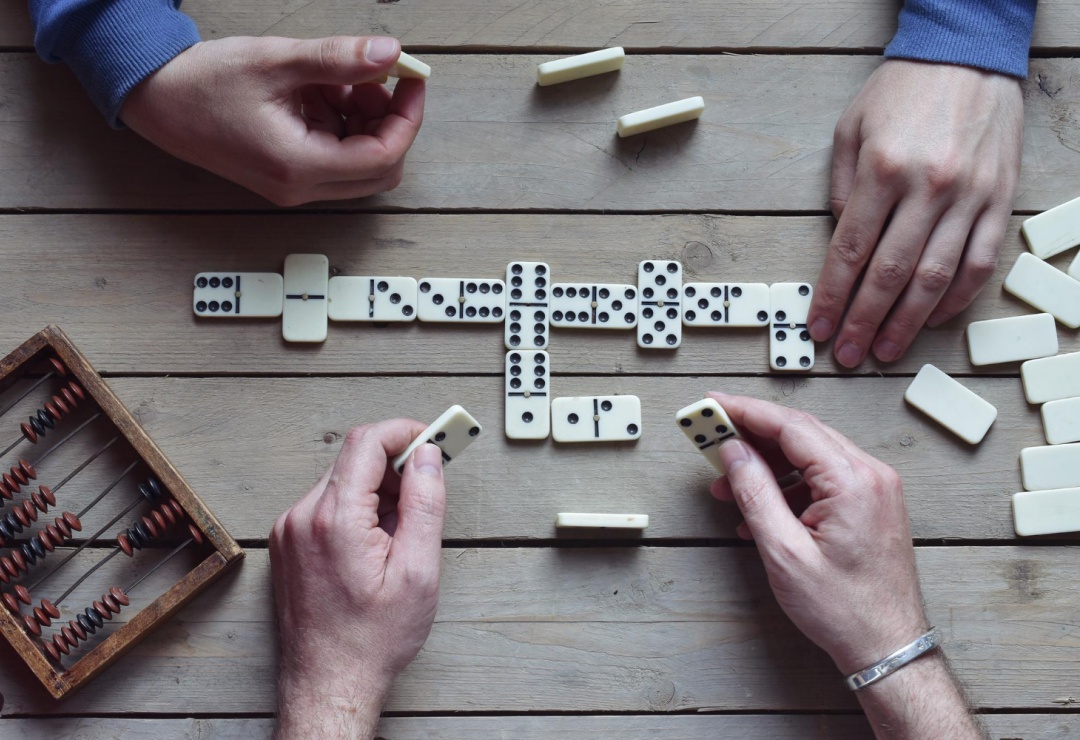How to Play All Fives Dominoes: Game Rules
All Fives is one of the most popular variations of the traditional game of dominoes. This version offers an experience that combines classic elements with its own scoring system that encourages strategy and planning. For this reason, learning how to play All Fives dominoes is not limited to just the rules of the game. It also encompasses tricks and tips that can make the difference between winning and losing.
About All Fives Dominoes
All Fives is a dominoes variant that adds an extra layer of strategy to the traditional game. In this version, players not only try to get rid of their tiles but also score points during the game by forming combinations whose ends add up to multiples of five.
This variant is known for its dynamic nature and the need for quick thinking. Players must be constantly aware of scoring opportunities while also planning their future moves and trying to block their opponents. It's a game that challenges both the mind and the ability to calculate quickly.
All Fives dominoes is played with a standard double-six domino set, although some variations may use larger sets. It is ideal for 2 to 4 players, making it a great option for family game nights or among friends.
How to play All Fives Dominoes: Game Rules
All Fives dominoes has specific rules that set it apart from the traditional game. Understanding these rules and some basic strategies is essential to fully enjoy this exciting variant.
Game Setup
To start playing All Fives, the first step is to shuffle all the domino tiles face down on the table. This process, known as "mixing the stones," ensures that the distribution of tiles is random and fair for all players.
Next, each player draws a specific number of tiles. If there are two players, each takes seven tiles. For games with three or four players, each participant takes five tiles. The remaining tiles form the "boneyard" or "graveyard," from which players can draw additional tiles during the game.
The first player is determined randomly in the first round. In subsequent rounds, the player who finished their tiles first in the previous round has the honor of starting. This player can place any tile from their hand to begin the game. Unlike some other domino variants, it is not necessary to start with a double.
Subsequent Plays and Scoring
After the first play, the game proceeds clockwise. Each player must add a tile to one of the open ends of the layout. The played tile must have a number matching the end where it's being placed. If a player cannot make a valid play, they must draw tiles from the boneyard until they can play or until the boneyard is empty. If the boneyard is depleted and the player still can't play, they pass their turn.
The distinctive feature of All Fives is the scoring system during the game. After each play, players sum up the numbers on the open ends of the layout. If the sum is a multiple of five (5, 10, 15, 20, etc.), the player who made the play immediately scores that number of points. For example, if after a play the open ends show 3 and 2, the sum is 5, and the player scores 5 points.
A special rule in All Fives is the "spinner." The first double played becomes the spinner, which can be played on all four sides, creating more playing options. When two tiles are played against the sides of the spinner, only the ends of those tiles are counted for scoring. This rule adds an extra layer of strategy to the game, as players must carefully consider when and how to use the spinner.
Ending the Round and Calculating Final Score
A round ends when a player uses all their tiles or when the game is blocked and no player can make a legal move. At the end of each round, the score is calculated in a specific way.
If a player has dominated (used all their tiles), they receive additional points based on the remaining points in the other players' hands, rounded to the nearest multiple of five. For example, if the opponents have 13 points left in their hands, the player who dominated would receive 15 additional points. However, if the opponents had 12 points in their hands, then the winning player would only receive 10 additional points.
If the game was blocked, the player with the fewest points in their hand receives points based on the difference between their hand and the hands of the other players, again rounded to the nearest multiple of five. This rule encourages players to try to end with the lowest possible number of points in their hands, even when they can't dominate.
The game continues for several rounds until a player reaches a predetermined score, usually 250 points for two players or 200 points for three or four players. This scoring structure ensures that the game has a balance between individual rounds and the overall long-term goal.
Advanced Strategies to Master All Fives Dominoes
To truly master how to play All Fives dominoes, it's essential to develop advanced strategies. To increase your chances of winning, consider the following tactics:
1. Prioritize scoring plays: Whenever possible, make moves that result in multiples of five on the ends. This not only increases your score but can also limit your opponents' options.
2. Control the spinner:The first double played can be a powerful tool. Use it to create more scoring opportunities for yourself and fewer for your opponents.
3. Block your opponents: If you can't score, try to leave totals that make it difficult for the next player to score. This may involve playing tiles that leave sums that are not multiples of five on the ends.
4. Count tiles: Keeping track of played tiles can help predict opponents' moves and plan your own plays more effectively. With practice, you can develop a good sense of which tiles are still in play and which are likely in your opponents' hands.
5. Balance scoring and tiles:It's important to balance the pursuit of scoring with the goal of getting rid of your tiles. While scoring is crucial, don't neglect the opportunity to domino. Sometimes, dominating can yield more points than several smaller scoring plays.
6. Use high tiles strategically:Tiles with high numbers can be useful for scoring but are also harder to play. Save them for opportune moments when they can yield significant scoring or block an opponent.
Lastly, don't be afraid to draw tiles. In All Fives, drawing tiles isn't always bad. It can provide more options for future scoring and can be a valid strategy if you have few play options.
Tips for Beginners
If you're just starting to learn how to play All Fives dominoes, here are some helpful tips to get you started:
1. Start with simple plays. At first, focus on making valid moves and understanding the flow of the game before worrying about complex strategies. As you gain confidence, you can start incorporating more advanced tactics.
2. Practice mental calculation.The ability to quickly add up the ends is crucial in All Fives. Practice this even outside the game to improve your speed and accuracy during matches.
3. Observe experienced players. If possible, watch games between more experienced players to learn tactics and strategies. Pay attention to how they make decisions and how they react to different game situations.
4. Don't be afraid to draw tiles. Sometimes, drawing a tile can open up new scoring possibilities. Don't see this as a disadvantage, but as an opportunity to improve your hand.
5. Stay flexible. Be prepared to adjust your strategy based on opponents' plays and available tiles. All Fives is a dynamic game, and the ability to adapt quickly is a valuable skill.
Mastering All Fives
Learning how to play All Fives dominoes may seem challenging at first, but with practice and patience, you'll soon be enjoying this exciting and strategic game. Remember, the key to success in this game is balancing the pursuit of points with the goal of getting rid of your tiles.
As you play more, you'll develop an intuitive sense for the best plays and strategies. Don't be afraid to experiment with different approaches and explore the full potential of the All Fives rules. Over time, you'll discover your own playing style and the strategies that work best for you.
Blog

How to Play Dominoes with 2 Players
Learning how to play dominoes with 2 players is an excellent way to experience this classic tile game. The one-on-one format creates an intimate battlefield where strategy meets skill, offering a per…

How to Remember Dominoes Throughout a Game
If you’ve ever wondered how to remember dominoes, you’ve come to the right place. This essential skill separates casual players from true game strategists. Mastering the art of memorizing…











